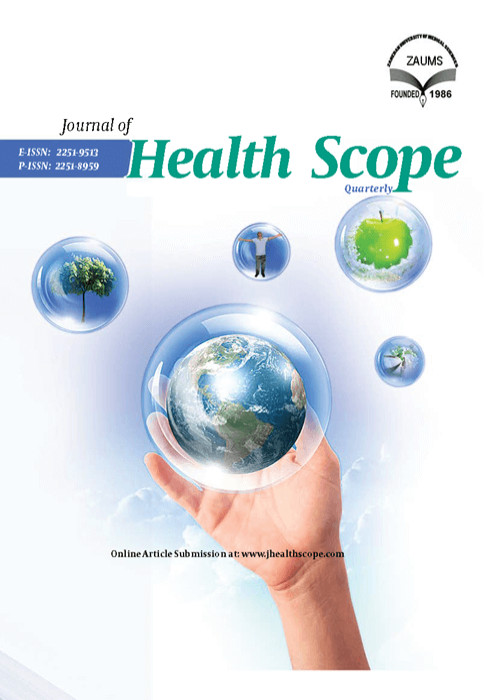Determination of Total Arsenic in Water Resources: A Case Study of Rivash in Kashmar City
Author(s):
Abstract:
Background
Arsenic is one of the hazardous elements, and drinking arsenic-rich water could cause various diseases such as cancer. The standard by the world health organization (WHO) and Iran for arsenic in drinking water is 10 µg L-1 and 50 µg L-1, respectively..Objectives
This study was conducted to survey the arsenic concentration in the rural water resources of Rivash, Kashmar..Materials And Methods
In this cross-sectional study, 60 samples were gathered from 10 sampling stations (all water supplies in Rivash, Kashmar) from April to June 2013. All the water supplies were groundwater (i.e. wells and springs). The sampling and preservation of the samples were performed according to the standard methods, and assessment was conducted using the Vapor Generation Accessory (VGA) method. Some factors such as pH, total dissolved solids (TDS), and electrical conductivity (EC) were tested to survey their relationship with the arsenic concentration. The data were analyzed using SPSS and the statistical tests of one-sample t-test and Mann-Whitney at a significance level of 0.05. The arsenic level was thereafter compared with the national and international standards..Results
The average arsenic levels in stations A, B, C, D, E, F, G, H, I, and J were 1.53 ± 1.03, 1.30 ± 1.07, 10.55 ± 3.83, 11.21 ± 5.01, 10.57 ± 3.68, 2.34 ± 0.73, 3.22 ± 0.58, 9.89 ± 3.57, 10.48 ± 5.07, and 2.23 ± 0.53µg L-1, respectively. The arsenic concentration levels were higher than the WHO guideline in 5 stations and lower in the others, but in none of the stations did the levels exceed the national standard. The difference between the arsenic levels and the national standard was statistically significant (P < 0.001). The difference between the arsenic levels in 50% of the stations and the WHO standard was significant (P < 0.001). There were no significant relationships between the arsenic level and TDS, EC, temperature, salinity, and residual chlorine, with the exception of pH..Conclusions
Given the high levels of arsenic in the Rivash water sources, it is essential that a plan be devised to replace the current supply with safe drinking water. Moreover, these water resources should be monitored regularly regarding the risk of contamination with arsenic..Language:
English
Published:
Journal of Health Scope, Volume:4 Issue: 3, Aug 2015
Page:
6
magiran.com/p1436101
دانلود و مطالعه متن این مقاله با یکی از روشهای زیر امکان پذیر است:
اشتراک شخصی
با عضویت و پرداخت آنلاین حق اشتراک یکساله به مبلغ 1,390,000ريال میتوانید 70 عنوان مطلب دانلود کنید!
اشتراک سازمانی
به کتابخانه دانشگاه یا محل کار خود پیشنهاد کنید تا اشتراک سازمانی این پایگاه را برای دسترسی نامحدود همه کاربران به متن مطالب تهیه نمایند!
توجه!
- حق عضویت دریافتی صرف حمایت از نشریات عضو و نگهداری، تکمیل و توسعه مگیران میشود.
- پرداخت حق اشتراک و دانلود مقالات اجازه بازنشر آن در سایر رسانههای چاپی و دیجیتال را به کاربر نمیدهد.
In order to view content subscription is required
Personal subscription
Subscribe magiran.com for 70 € euros via PayPal and download 70 articles during a year.
Organization subscription
Please contact us to subscribe your university or library for unlimited access!



